Style
Akris Creative Director Albert Kriemler on How His Fashion Design Begins With Art That ‘Sparks a Desire’
The Swiss fashion designer shares the art that inspired his Fall 2020 collection.
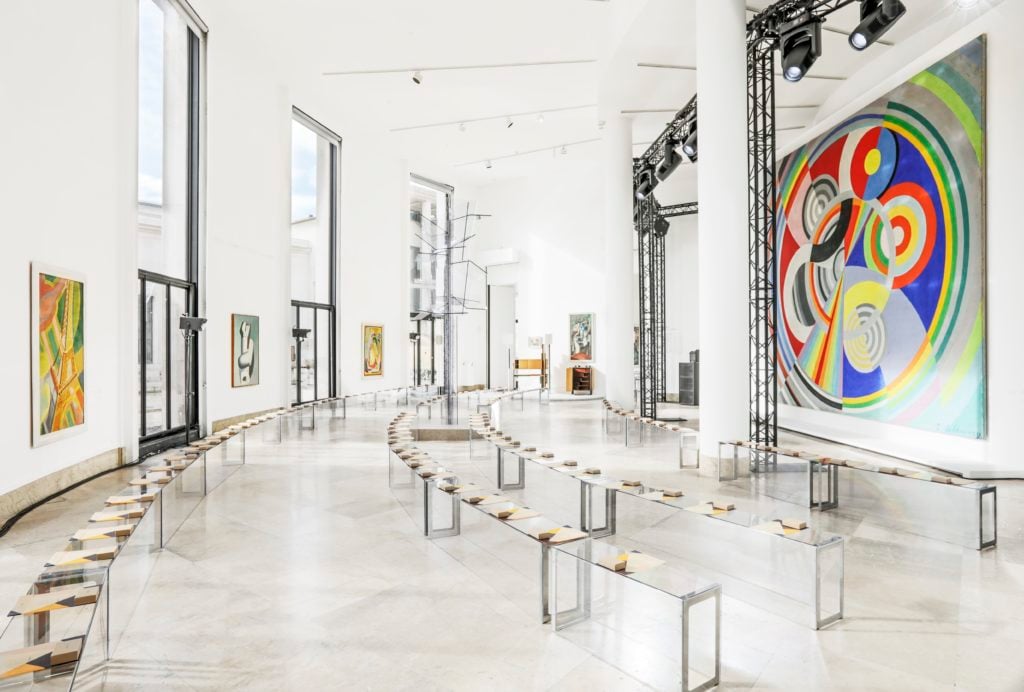
The Swiss fashion designer shares the art that inspired his Fall 2020 collection.

Two weeks ago, Akris—the Swiss fashion house founded in 1922 by Alice Kriemler-Scoch—presented its Fall 2020 ready-to-wear collection at Paris’s Museum of Modern Art. Vogue called it the “elegant, high-fashion version of comfort food” for its luxe cashmere fabrics transformed into cozy cowl-neck sweaters, body-hugging capes, and high-collared coats designed to take shelter in.
Beautiful clothing doesn’t have to be loud, at least not in creative director Albert Kriemler’s books. “I think a woman of purpose doesn’t want to wear complicated clothes,” he said.
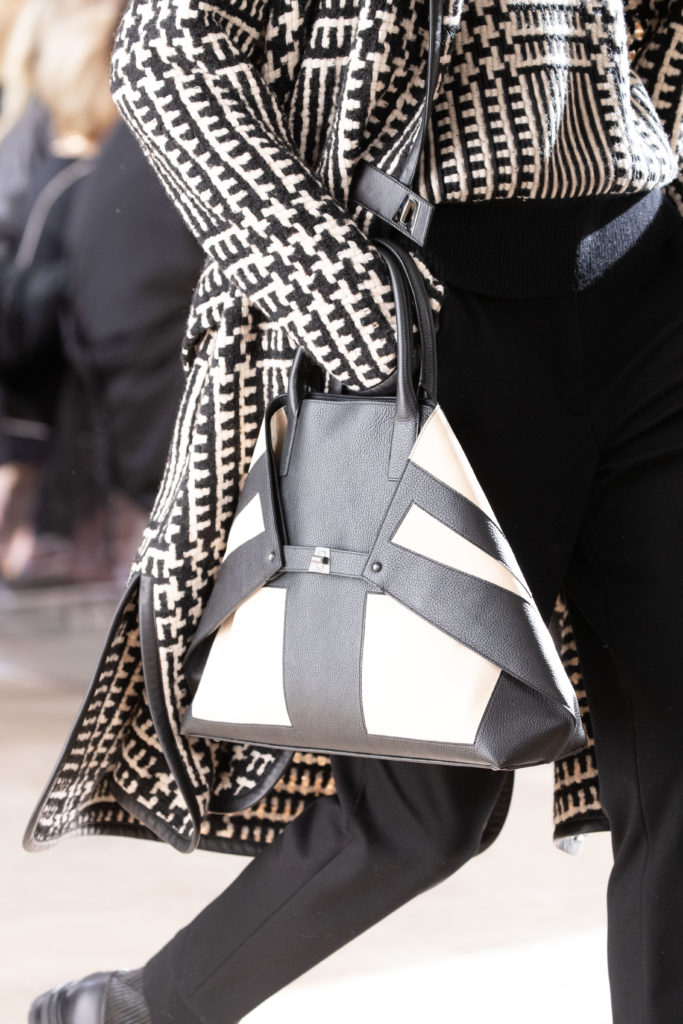
A detail of Akris Fall 2020. Photo courtesy of Akris.
But, upon closer inspection, there’s more to Kriemler’s method than first meets the eye, starting with the fact that the show was the designer’s first to ever take place in a museum. That’s surprising given his history of referencing and working with a score of different artists since Akris began presenting its clothes in 2004.
A cursory glance at the house’s collaborations will illustrate the range of Kriemler’s artistic tastes, which range from German photographer Thomas Ruff, who co-created garments made to mimic his photographs of celestial New York skyscrapers, to the Cuban-born artist Carmen Herrera, who exhibited her work for the first time in the US at age 101. Kriemler approached her about collaborating on a few pieces for his Spring 2017 show, which riffed on her graphic, minimalist works.
At least on a surface level, Kriemler’s selection process is more about introducing his audience to the varied sources of his inspirations rather than nabbing an attention-grabby collaboration with an art-market-star du jour. Kriemler’s penultimate collection, for Spring 2020, for example, was inspired by the Italian Modernist painter Antonio Calderara, a student of Lucio Fontana who was a bit of a dark horse. Among his small, but dedicated following, Calderara was known for experimenting with the bounds of duplication via his beautiful small-scale works, which earned him the title “master of the little painting.”
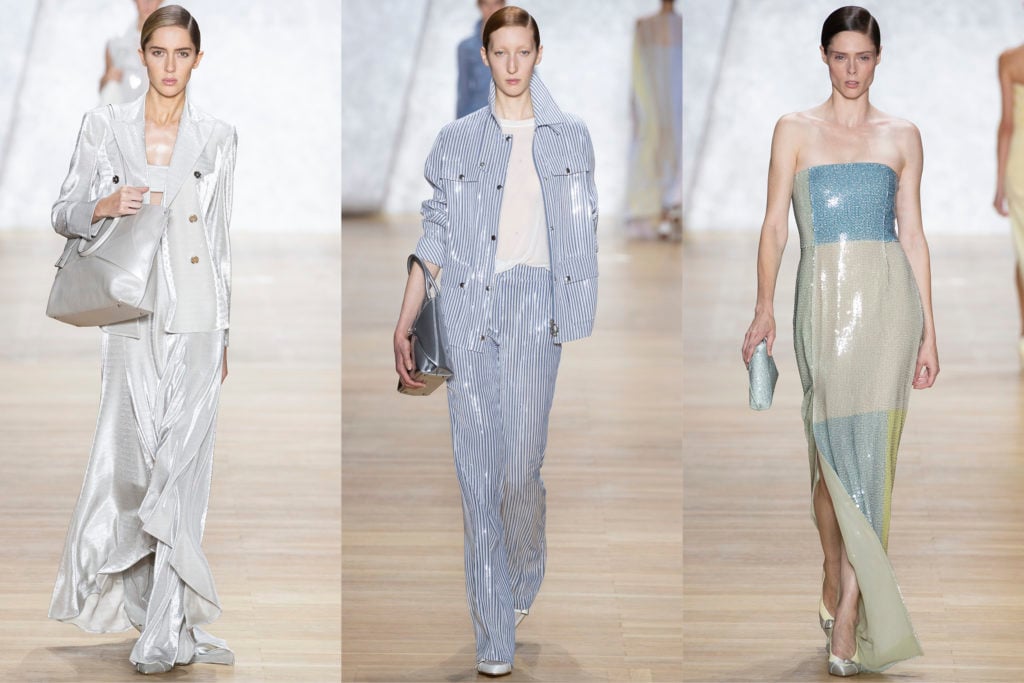
The Spring 2020 collection, featuring clothes inspired by artist Antonio Calderara. Photo courtesy of Getty Images.
It comes as little surprise, then, to learn that Kriemler’s latest collection was also inspired by artists—in particular a 1925 sculpture titled Arbe Cubiste (or Cubist Tree) by the French duo Jan and Joel Martel, twin brothers who were founding members of the Union des Artistes Modernes, and whose sculptures of animals and the world around them emphasized the sensuousness of nature’s forms. After discovering their work, Kriemler set out to conceive a set design for the runway show that channeled their shared ethos.
“I came across the stunning sculptures of the Martel brothers while reading about the architect Robert Mallet-Stevens,” Kriemler tells Artnet News. “They designed four concrete trees for his garden at the Exposition Internationale des Arts Decoratifs et Industriels Modernes in 1925. The geometric shape of their leaves immediately reminded me of our iconic trapezoid [print]. I was fascinated by how the Martels, with a touch of humor and provocation, reduced a tree to a simple geometric abstraction.”
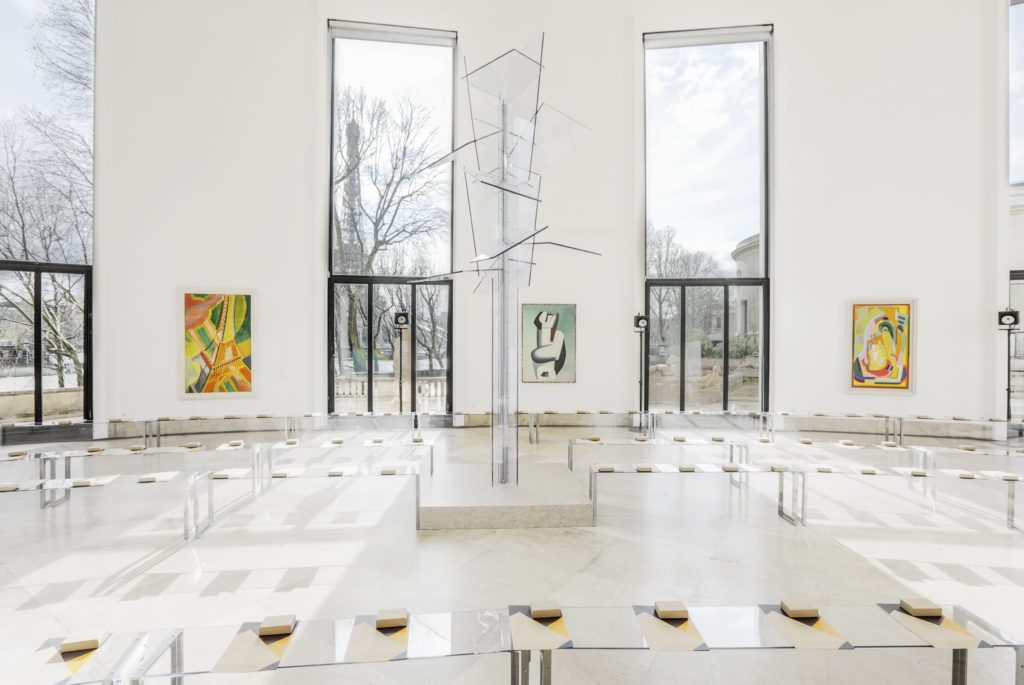
Kriemler’s runway show staging, inspired by the Martel brothers’ sculpture. Photo courtesy Akris.
Inspired, Kriemler decided to reduce the form even more by translating the Martels’ geometric tree form into transparent, plexiglass works, which he placed in the gallery where the show would take place. With the trapezoid shape harkening back to Akris’s design roots—subtly playing on the ‘A’ of house’s name, and connecting to its past collections’ geometric underpinnings—it felt like fate. “They were the perfect pieces for our discreet set in the museum, and they didn’t overshadow the masterpieces of Sonia and Robert Delaunay [hung around the gallery], but still referred to my inspiration.”
As for the collection itself, Kriemler began learning more about the French architect and designer Robert Mallet-Stevens, eventually watching the 1924 drama L’Inhumaine, for which he designed the bold cubist film sets. Their black-and-white architecture and drama served as inspiration for several of the clothes, including a tunic featuring a Cubist-inspired pattern, a techno-grid cube skirt, and a long printed coat featuring a trapezoid-style closure.
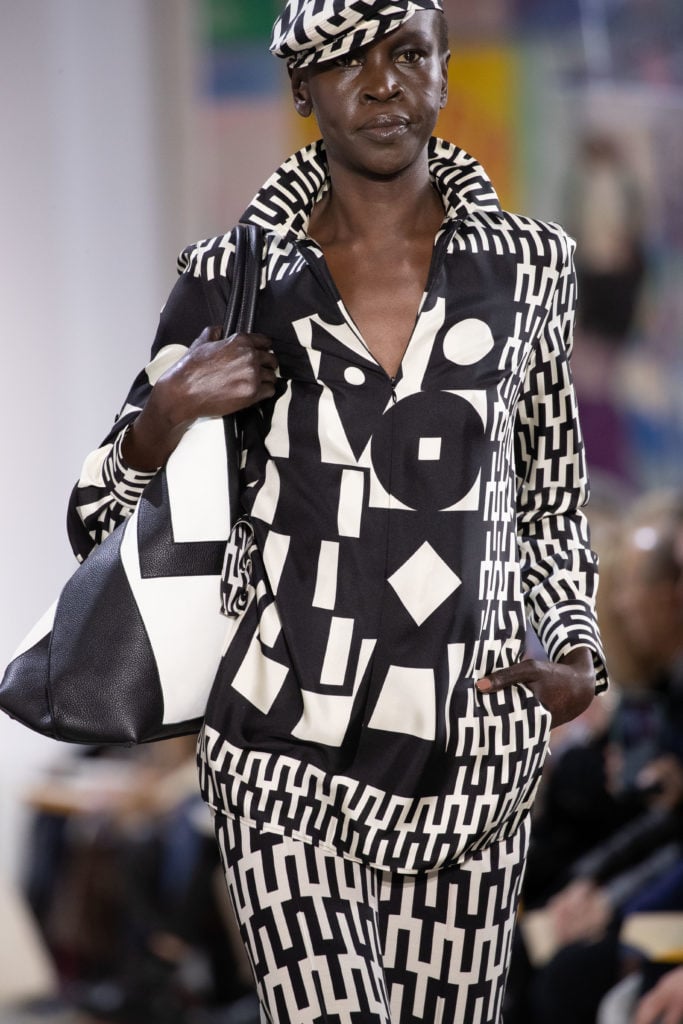
Bold prints inspired by the Cubist set designs of Robert Mallet-Stevens. Photo courtesy of Akris.
Additionally, Kriemler fell in love with Mallet-Stevens for his own history of collaborating with fine artists, many of which began through his involvement with the Union des Artistes Modernes, through which the architect helped establish Paris as a new center for groundbreaking art and design. Mallet-Stevens’s spirit of collaboration reminded Kriemler of his own work, and his mission to break new ground and inspire novel art forms through the cross-pollination of art and design.
“I go to exhibitions, I read and talk to artists, architects, or other creative minds and then it sparks a desire to create a dedicated collection to the work,” says Kriemler, of how the seeds for all of his collections have begun. “Sometimes it’s a specific piece or art that inspires workmanship, or sometimes it’s a pattern. It’s not a set principle, and often the project starts without a plan, but with a subjective selection of oeuvres. I always challenge myself to translate a work on fabric with respect, but then also to add another dimension to it—to bring a sense of ease and movement to it by transforming it into a new medium that lives well on womens’ clothes. I want it to be something that enhances their lives.”